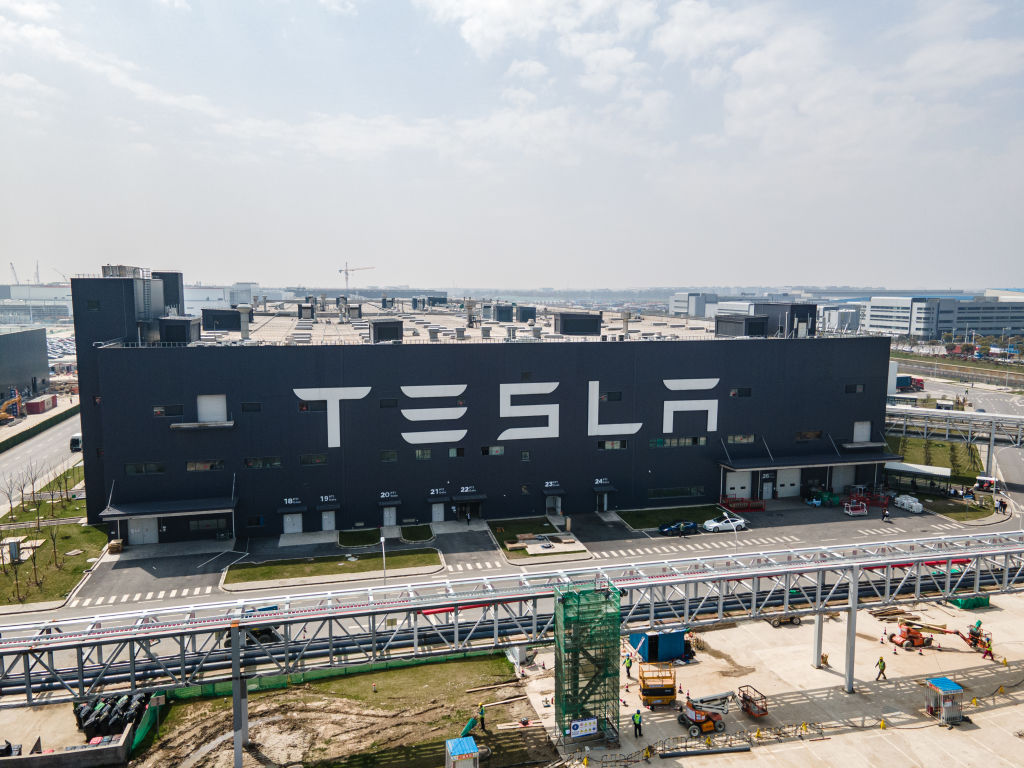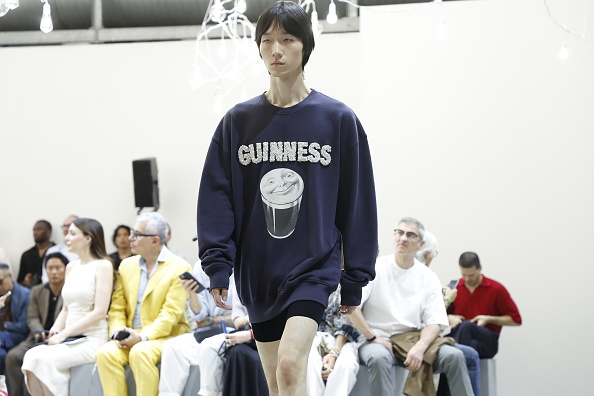It Isn’t Just Tesla’s Stock That Needs to Slow Down
Elon Musk boosters and sceptics alike might agree that the car industry’s value leaves little room.
Whatever your view on Tesla, pulling money out of the car industry right now makes sense.
Two years ago, the world’s top 10 auto makers by market value outside China were together worth about US$680 billion. Now they are valued at more than $2 trillion. Tesla has jumped from third place to an enormous lead, and this month electric-vehicle makers Rivian and Lucid replaced Honda and Ferrari in the ranking. Rivian’s stock has more than doubled since its initial public offering last Wednesday.
This extraordinary surge in market value, which the changes in the pecking order suggest is mainly related to EVs, is almost impossible to rationalize. The earnings potential of a mature industry can’t have tripled. It is possible that EVs will eventually be more profitable than gas-powered ones—Tesla’s 14.6% operating margin in the third quarter showed the potential—but three times as much is a wild stretch.
The more difficult question, one that generates more heat among investors than perhaps any other right now, is which companies are more overvalued. Is it Tesla, Rivian and Lucid, which will have to grow exponentially to live up to valuations that have nothing to do with their current sales? Or is it incumbent giants like Volkswagen and Toyota, which are in different ways struggling to come to terms with EVs
Like simple market-value comparisons—Tesla is now worth four Toyotas!—conventional valuation multiples flag the EV specialists as overvalued. Tesla stock trades at 127 times forward earnings compared with less than 10 for most traditional car makers. Having just started commercial production, Rivian and Lucid don’t even have meaningful financial numbers to compare their $100 billion-plus market values to—just business plans.
But looking further into the future, as today’s record-low real yields on safe assets encourage, it is also easy to see old-school manufacturers as overvalued. The likes of General Motors and Ford have announced eye-catching EV investments funded by their conventional-car profits, and investors have rewarded their boldness. Both stocks are close to decade highs. But they have yet to talk about the challenge of winding down their vast combustion-engine operations. As EVs take market share, a reckoning will begin that may make clearer to investors the costs associated with this technological transition for a heavily unionized industry.
Tesla’s valuation only really adds up if it hits its target production capacity of 20 million vehicles a year by 2030, and at very healthy margins. Elon Musk’s ambition is hubristic given the problems car makers have faced historically when they have approached even the 10 million mark—think of VW’s diesel scandal, Toyota’s unintended acceleration, the unraveling of the Renault-Nissan-Mitsubishi alliance.
Yet it isn’t unprecedented for a disrupter to take a disproportionate share of industry profits for a surprisingly long period, says Philippe Houchois, an analyst at Jefferies who rates Tesla a buy. Ford did so in the 1910s and Toyota in the 1970s. Both companies brought a new simplicity to making cars, as Tesla also wants to. Toyota’s edge in traditional mass-market auto manufacturing persists to this day in the form of industry-leading margins.
Passions run high in this debate, which time will settle only slowly. The one thing that seems clear now is that investors overall are far from adequately discounting the unusual level of uncertainty about what the car industry will look like in 2030. When the fog gets thick, speeding up with excitement isn’t the best response.
Reprinted by permission of The Wall Street Journal, Copyright 2021 Dow Jones & Company. Inc. All Rights Reserved Worldwide. Original date of publication: November 16, 2021
 Copyright 2020, Dow Jones & Company, Inc. All Rights Reserved Worldwide. LEARN MORE
Copyright 2020, Dow Jones & Company, Inc. All Rights Reserved Worldwide. LEARN MORE
This stylish family home combines a classic palette and finishes with a flexible floorplan
Just 55 minutes from Sydney, make this your creative getaway located in the majestic Hawkesbury region.
Continued stagflation and cost of living pressures are causing couples to think twice about starting a family, new data has revealed, with long term impacts expected
Australia is in the midst of a ‘baby recession’ with preliminary estimates showing the number of births in 2023 fell by more than four percent to the lowest level since 2006, according to KPMG. The consultancy firm says this reflects the impact of cost-of-living pressures on the feasibility of younger Australians starting a family.
KPMG estimates that 289,100 babies were born in 2023. This compares to 300,684 babies in 2022 and 309,996 in 2021, according to the Australian Bureau of Statistics (ABS). KPMG urban economist Terry Rawnsley said weak economic growth often leads to a reduced number of births. In 2023, ABS data shows gross domestic product (GDP) fell to 1.5 percent. Despite the population growing by 2.5 percent in 2023, GDP on a per capita basis went into negative territory, down one percent over the 12 months.
“Birth rates provide insight into long-term population growth as well as the current confidence of Australian families,” said Mr Rawnsley. “We haven’t seen such a sharp drop in births in Australia since the period of economic stagflation in the 1970s, which coincided with the initial widespread adoption of the contraceptive pill.”
Mr Rawnsley said many Australian couples delayed starting a family while the pandemic played out in 2020. The number of births fell from 305,832 in 2019 to 294,369 in 2020. Then in 2021, strong employment and vast amounts of stimulus money, along with high household savings due to lockdowns, gave couples better financial means to have a baby. This led to a rebound in births.
However, the re-opening of the global economy in 2022 led to soaring inflation. By the start of 2023, the Australian consumer price index (CPI) had risen to its highest level since 1990 at 7.8 percent per annum. By that stage, the Reserve Bank had already commenced an aggressive rate-hiking strategy to fight inflation and had raised the cash rate every month between May and December 2022.
Five more rate hikes during 2023 put further pressure on couples with mortgages and put the brakes on family formation. “This combination of the pandemic and rapid economic changes explains the spike and subsequent sharp decline in birth rates we have observed over the past four years,” Mr Rawnsley said.
The impact of high costs of living on couples’ decision to have a baby is highlighted in births data for the capital cities. KPMG estimates there were 60,860 births in Sydney in 2023, down 8.6 percent from 2019. There were 56,270 births in Melbourne, down 7.3 percent. In Perth, there were 25,020 births, down 6 percent, while in Brisbane there were 30,250 births, down 4.3 percent. Canberra was the only capital city where there was no fall in the number of births in 2023 compared to 2019.
“CPI growth in Canberra has been slightly subdued compared to that in other major cities, and the economic outlook has remained strong,” Mr Rawnsley said. “This means families have not been hurting as much as those in other capital cities, and in turn, we’ve seen a stabilisation of births in the ACT.”
This stylish family home combines a classic palette and finishes with a flexible floorplan
Just 55 minutes from Sydney, make this your creative getaway located in the majestic Hawkesbury region.






















